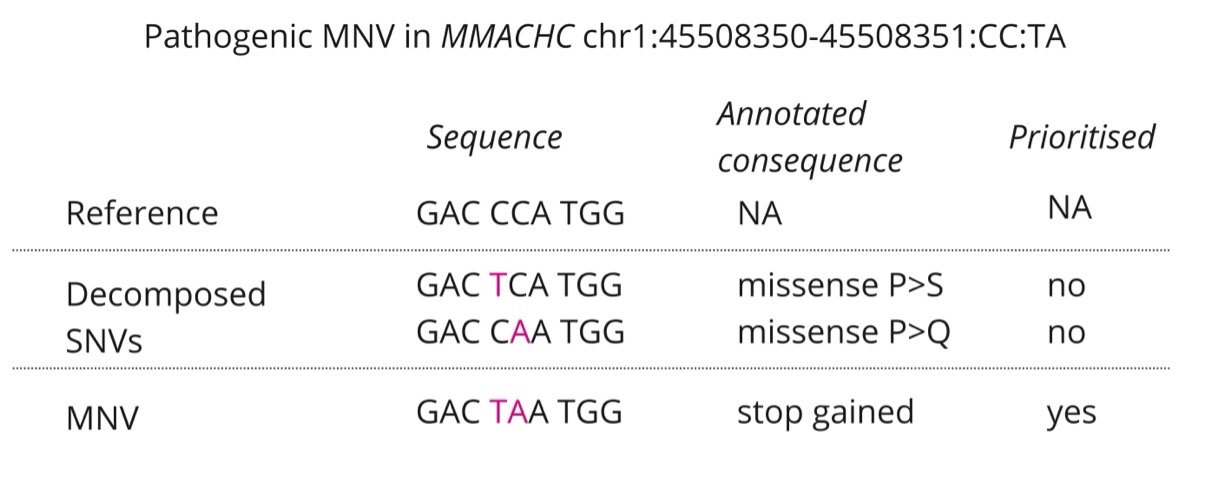Multinucleotide variants
Two or more variants that appear nearby on the same haplotype may be interpreted as a multinucleotide variant (MNV). The haplotype can be identified as variants with a shared phase set based on read-based phasing as described above. Variants are represented individually in a VCF, but are analysed as an MNV with the appropriate annotation and prioritisation. This is especially relevant when the variants appear within the same codon. Below is an example of an MNV that would be prioritised with appropriate annotation but not when considered as its decomposed variants.

Due to the complexity of appropriate annotation of MNVs, there are specific differences in the pipeline in how these are handled as well as known caveats:
- For MNVs, the minimum AF of any of the decomposed variants is used to check against the threshold. There is a chance that the individual variants exceed the AF threshold but the variants appearing together as an MNV is rare and these will be filtered out. However, this is not expected to be a common scenario for MNVs as they usually arise simultaneously or consecutively on the same haplotype.
- For MNVs that are on inclusion lists, MNV prioritisation is currently limited to exact matches. Variants cannot be prioritised solely on the basis of causing the same predicted protein change as an MNV from an inclusion list.
- When there is no phase information for the MNVs, these may be annotated incorrectly. The decomposed variants will be annotated separately. DRAGEN will strictly not phase variants if there is any conflicting evidence in the reads.
- For an MNV to be prioritised through inclusion lists, all constituent variants must be prioritised. For example, an MNV cannot be prioritised if one or more of its component small variants is on the exclusion list.
- Hemizygous MNVs cannot be prioritised due to a limitation in variant calling in DRAGEN.
MNV annotation checks
MNV annotation must always be checked manually to confirm correct annotation before reporting any findings. Detailed instructions can be found in the Variant Review SOP.